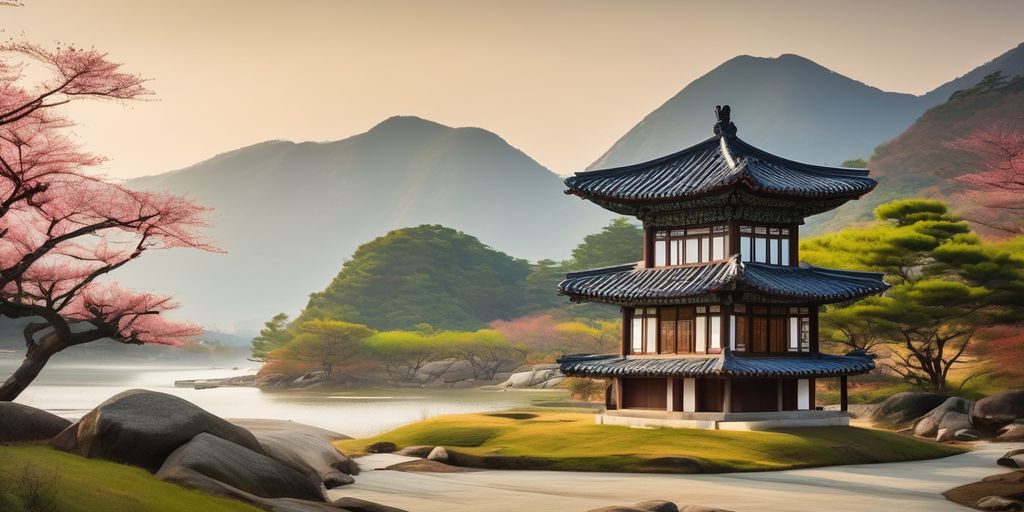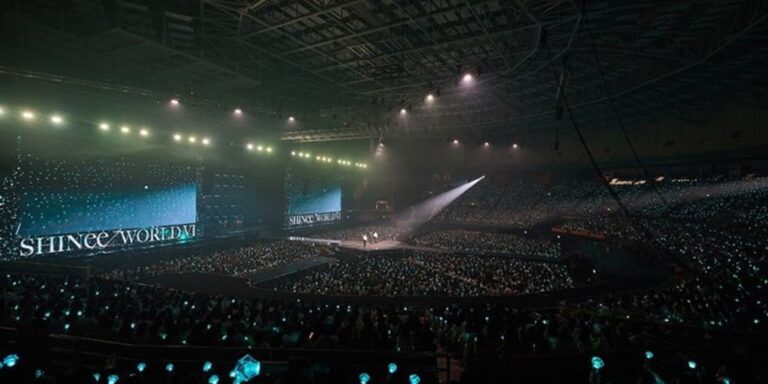
Exploring the cultural and historical depths of Korea, the ‘Land of Morning Calm,’ reveals a rich tapestry of literature, architecture, and royal customs that have shaped its identity. This article delves into the evolution of Korean prose, the architectural marvels, and the intricate lifestyles within the royal courts, providing a comprehensive understanding of Korea’s cultural heritage.
Key Takeaways
- Korean literature has evolved significantly from its origins in the Pre-Koryo period to the development of full-fledged novels during the Chosŏn period.
- Architectural designs in Korea were influenced by both the Tang dynasty and Western Qin, with structures like Kwanghallu Pavilion embodying these influences.
- Royal life in the Chosŏn Dynasty was complex, with scholar-officials often leading double lives, balancing official duties and personal indulgences in literature and art.
- The creation of anthologies such as the Anthology of Eastern Literature was supported by the Chosŏn government to promote literature that was pure, just, and educational.
- Korean landscapes are not only scenic but also rich in cultural symbolism, often reflecting the poetic and artistic heritage of the nation.
Historical Foundations of Korean Literature
Pre-Koryo and Koryo Period Prose
The genesis of Korean literature during the Pre-Koryo and Koryo periods was marked by a rich tapestry of prose that laid the foundational ethos for subsequent literary developments. The anthology efforts during these times were crucial in preserving and transmitting the cultural and philosophical values of early Korea.
Chosŏn Period Prose Evolution
During the Chosŏn period, Korean prose underwent significant transformations, adapting to the changing socio-political landscape. This era saw the refinement of narrative styles and the enhancement of literary expression, which were pivotal in shaping the modern contours of Korean literature.
Anthologies and Their Cultural Impact
Anthologies played a seminal role in the cultural landscape of Korea, serving as repositories of knowledge and tradition. The compilation of these works not only preserved literary treasures but also facilitated the dissemination of cultural values across generations, making a lasting impact on Korean society.
Architectural Marvels of Korea
Kwanghallu Pavilion: A National Treasure
Built in 1414, Kwanghallu Pavilion is not only a National Scenic Treasure but also a masterpiece of architectural and landscape design. The front pond, completed in 1582, is designed to mirror the celestial bridge of the Milky Way, enhancing the pavilion’s mythical allure. The three islands within the pond symbolize a connection to the heavens, each named to reflect celestial themes.
The Significance of Historical Pavilions
Historical pavilions in Korea serve as more than just beautiful structures; they are cultural beacons that tell tales of the past. These pavilions are often situated in locations of significant historical importance, such as former palace sites or important military posts. Their architectural styles provide insights into the periods during which they were built.
Influence of Tang and Western Qin Architecture
The architectural styles of the Tang and Western Qin dynasties have left a lasting impact on Korean building designs. This influence is evident in the use of intricate roof designs and the strategic placement of buildings to harmonize with the natural landscape. The adoption of these styles speaks to the historical interactions and cultural exchanges between Korea and these ancient Chinese dynasties.
Royal Life in the Chosŏn Dynasty
Daily Customs at the Royal Palace
The Chosŏn Dynasty was marked by a continuation of traditions from previous dynasties, deeply influenced by neo-Confucianism. The daily life at the palace was structured around these principles, dictating the routines and ceremonies observed by the royals and their courtiers. The Diary, a historical document, provides a detailed look into the types of foods consumed and the living arrangements within the palace, offering a vivid picture of the daily customs.
The Double Life of Scholar-Officials
Scholar-officials in the Chosŏn Dynasty led lives that were a blend of public duty and private concerns. Their public persona was governed by strict Confucian principles, while privately, many faced personal challenges and political intrigues. This dual existence often created a complex web of relationships and loyalties that were crucial for their survival and success in the royal court.
Diary Revelations and Royal Cuisine
The Diary not only sheds light on the personal lives of palace women and their interactions but also highlights the royal cuisine. It reveals the competition among palace women, which was intense as their fates were intertwined with those they served. The culinary practices detailed in the Diary reflect the cultural and social intricacies of the Chosŏn court, illustrating how food was not just sustenance but a part of the elaborate fabric of court life.
The Art of Korean Storytelling
Tales of the Bizarre and Humorous
Korean storytelling has always embraced the bizarre and humorous, reflecting a culture rich in imagination and wit. These tales often feature supernatural beings and events, presenting a worldview unfettered by rigid norms. The narratives, while simple, captivate with their vivid portrayal of the human condition intertwined with the fantastical.
Development of Fictional Prose
The journey of Korean prose from oral narratives to full-fledged novels is a fascinating evolution. Early works like the ‘Tales of the Bizarre’ began as oral stories before being transcribed, marking the initial steps in this literary transformation. This progression is evident in works such as the ‘Rhyming Treasure of Assembled Jewels’, which blend storytelling with prose writing, setting the stage for more complex narratives.
Influence of Oral Traditions on Literature
Oral traditions, particularly the musical storytelling of p’ansori, have left a profound impact on Korean literature. P’ansori, a performative narrative form, enriches the literary tapestry with its dynamic interplay of drama, music, and poetry. This form has not only preserved but also evolved Korean narrativity, embedding a deep performative dimension within the literary culture.
Literary Collections and Government Influence
Creation of the Anthology of Eastern Literature
The Anthology of Eastern Literature, influenced by notable Chinese works, marked a significant milestone in Korean literary history. It was a deliberate effort by the government to cultivate a literary culture that aligned with Confucian values and national identity. This anthology served as a cornerstone in the preservation and dissemination of Korean literary styles.
Government Support for Literary Works
Government involvement in literature was not merely passive. Active promotion of works that were deemed morally and educationally suitable was common, while those considered detrimental were often suppressed. This selective endorsement helped shape the literary landscape, ensuring that literature supported the state’s ideological goals.
Literary Styles and Educational Impact
The government’s influence extended to the educational sector, where literary styles were not only taught but also used as tools for instilling Confucian values. The integration of literature into education helped establish a uniform cultural and ideological framework across the nation, which was crucial for maintaining social harmony and governance.
Scenic and Cultural Landscapes
The Legend of the Cowherd Boy and Weaving Girl
In the tapestry of Korean folklore, the story of the Cowherd Boy and the Weaving Girl stands out as a poignant narrative that has shaped much of the cultural landscape. This legend not only illustrates the romantic and mystical elements of Korean culture but also reflects the deep-seated values of love and separation that resonate through many Korean artistic expressions.
Symbolism in Korean Scenic Design
Korean scenic design is rich with symbolism, where every element carries a deeper meaning. Traditional gardens and pavilions are designed to harmonize with the natural environment, creating a seamless blend of architecture and nature. This approach is evident in the serene arrangement of spaces and the thoughtful placement of water features and rocks, which are intended to evoke tranquility and reflection.
Cultural Significance of Korean Landscapes
The landscapes of Korea are not just visually stunning; they are steeped in cultural significance. Each mountain, river, and forest is imbued with stories and legends, making them integral parts of the national identity. The appreciation for nature is a central theme in Korean culture, influencing everything from daily customs to national festivals. The landscapes are seen as living entities that hold the history and spirit of the nation, making them revered sites of cultural heritage.
The Evolution of Korean Prose
Early Fictional Works
Korean prose literature can be divided into narratives, fiction, and literary miscellany. Narratives include myths, legends, and folktales found in the written records of early Korea. These works laid the foundational stones for the rich tapestry of Korean storytelling, evolving significantly over centuries.
Transition to Full-Fledged Novels
The journey from simple narratives to complex novels in Korean literature was marked by a gradual but steady progression. This transition was influenced by both internal developments and external literary influences, showcasing a forward toward greater inclusion of genres and talents.
Blending of Storytelling and Prose Writing
The final phase in the evolution of Korean prose saw a blending of traditional storytelling techniques with formal prose writing. This synthesis helped in creating a unique narrative style that is both engaging and reflective of Korea’s eclectic worldview.
Conclusion
As we conclude our exploration of Korea’s treasures, it’s evident that the Land of Morning Calm is not only a repository of breathtaking landscapes and profound historical sites but also a vibrant testament to the enduring spirit of its people. From the ancient tales woven into the fabric of Korean society to the architectural marvels like the Kwanghallu Pavilion, each element tells a story of resilience, innovation, and cultural pride. Korea’s literary and historical compilations, such as the Anthology of Eastern Literature, further highlight the intellectual rigor and aesthetic sensibilities that have shaped this nation. As we reflect on the richness of Korea’s heritage, it becomes clear that the true treasure lies in its ability to blend tradition with transformation, inviting all who delve into its history to not only observe but also to partake in its ongoing narrative of growth and celebration.
Frequently Asked Questions
What are the oldest surviving fictional works of Korea?
The oldest surviving fictional works of Korea are found in the Rhyming Treasure of Assembled Jewels (Taedong unbu kunok), which blends storytelling with prose writing.
What does the Anthology of Eastern Literature reveal about scholar-officials?
The Anthology of Eastern Literature reveals the double life of scholar-officials, showcasing their taste for both literary works and sometimes bawdy narratives.
What role did the Chosŏn government play in literary creation?
The Chosŏn government supported the creation of literary works like the Anthology of Eastern Literature, which was encouraged by His Royal Majesty’s fondness of literature.
What does the Diary reveal about life at the royal palace in Korea?
The Diary provides a rich source for examining the daily customs at the royal palace, including details on the types of foods eaten and living conditions, offering a realistic picture of palace life.
What is the significance of Kwanghallu Pavilion in Korean culture?
Kwanghallu Pavilion, built in 1414, is South Korea’s National Scenic Treasure No. 33. It features a pond and three islands, symbolically connected to the legend of the Cowherd Boy and Weaving Girl.
How did the Chosŏn Dynasty organize and support literature?
During the Chosŏn Dynasty, literature was organized into styles like lyrics, poetry, and prose, and compiled into works that were deemed helpful for ruling and educating, reflecting the dynasty’s commitment to literature.




Leave a Comment